This article needs additional citations for verification .(August 2010) |
Education in Slovakia consists of a free education system based on 10 years of compulsory school attendance.
This article needs additional citations for verification .(August 2010) |
Education in Slovakia consists of a free education system based on 10 years of compulsory school attendance.
Most schools, especially universities, are owned by the state, though since the 1990s there are also church-owned and private schools (see Statistics section).
Slovakia has 10 years of compulsory education.
Students go to school five days a week, from Monday until Friday. Saturdays as school days were cancelled before the 1980s. Summer break is from the 1st of July until the 1st of September (at universities also in June). Other breaks occur a week or two around Christmas and Easter, in spring, autumn and on official holidays.
A school year consists of two semesters. The first one ends at the end of January in all schools, the second one before the beginning of the summer holidays. Primary and secondary school students usually have around 6 classes a day (less at the beginning of the education, more later). Classes last for 45 minutes, and there (several short ones and one longer one – the so-called "big break" (or by the students often just "big one")). The state financed education and all textbooks and instructional material below the university level are free (returned at the end of the semester) – in most cases at least. However, there are also private schools which are paid.
Students at standard schools receive marks in almost all subjects. The marks go from 1 (best) to 5 (worst), and may include unofficial intermediary marks (such as to assess a single project, test, etc. but never on student's final reports). Compared to western European countries, there is an intrinsic "tradition" of teachers granting students rather more marks at the "good" end of the scale, i.e. more 1s, 2s and 3s than they would receive in western Europe, for example. Students below the university level receive school reports (lists of final marks) at the end of each semester.
See: Education in Czechoslovakia and List of colleges and universities in Slovakia
| Level/Grade | Typical age |
|---|---|
| Infant School | |
| Nursery School | 0-3 |
| Kindergarten | 4-6 |
| Primary School | |
| 1st Grade | 6-7 |
| 2nd Grade | 7-8 |
| 3rd Grade | 8-9 |
| 4th Grade | 9-10 |
| 5th Grade | 10-11 |
| 6th Grade | 11-12 |
| 7th grade | 12-13 |
| 8th Grade | 13-14 |
| 9th Grade | 14-15 |
| High School | |
| 1st Grade | 15-16 |
| 2nd Grade | 16-17 |
| 3rd Grade | 17-18 |
| 4th Grade | 18-19 |
| Post-secondary education | |
| Tertiary education (College or University) | Usually three years of bachelor's degree and two years of master's degree |

Primary schools are usually preceded by kindergartens where children can spend up to 4 years, which in turn can be preceded by day nurseries.
Generally, children start primary school in the year in which they reach 6 years of age. Standard primary schools last 9 years (8 before approx. the mid-1990s), however since the early 1990s students can visit an "8-year" gymnasium, where they can start attending after just 5 years (4 prior to the school year of 2009/2010) of primary school.
The primary education system is formally divided in two "stages". The second stage is characterized by many changes in the subjects treated as compared to the first stage:
Many primary schools have been closed down since about 2000 due to unfavourable demographic development.
Subjects at the second primary education stage (many of them are taught even earlier however) include:
There are also many facultative "primary art schools" — afternoon schools for particular music instruments, theatre, painting, etc. These have had a long tradition in Slovakia and are attended by a large portion of pupils.

Before entering any school of secondary education (including 8-year gymnasium) for which there are more applicants than places offered, the applicants have to pass entrance examinations.
Secondary schools usually last for 4 years (from the age of 16 to the age of 19). A gymnasium can also last up to 8 years (up to the age of 18) depending on how many years the student spent in primary school.
There are four types of secondary schools:
The gymnasia (high schools) are usually considered "prestigious" schools, because they explicitly prepare for higher education and because they are often highly selective - only the brightest students from elementary schools may be accepted. In fact, most students who attend them later continue their education at a school of higher education in Slovakia or abroad[ citation needed ]. The high schools that are the most competitive are usually located either in Bratislava (Gamča, Gymnázium Metodova, Gymnázium Jura Hronca (GJH), ŠPMNDAG A school for the exceptionally talented children), in Košice (Gymnázium Poštová etc.), and a boarding gymnasium in the city of Sučany Bilingválne Gymnázium Milana Hodžu often abbreviated to GBAS - meaning Gymnasium Bilingual English-Slovak. Of the latter GBAS is considered the most prestigious in the central region, Poštová in the eastern region, and GJH as well as GAMČA in the western region where the capital, Bratislava, is located. These schools annually accept only a very low percentage of applicants often below 15% or 10%, and tend to accept a large proportion of commuting or boarding students subject to tradition. Despite providing general education, many gymnasia have specialized classes . Some of them specialize in languages or are even "bilingual" Slovak-German/English/French etc. (e.g. Gymnázium Milana Hodžu, Gymnázium Metodova, Gymnázium Jura Hronca), others are specialized in mathematics or computer programming, for example Gamča and Gymnázium Jura Hronca. Gamča is notable for being founded in 1626 [1] which is exactly 113 years after the gymnasium in Levoča was founded in 1513. On the other hand, GBAS is noted for being established only in 1993 through a close cooperation of the Slovak Ministry of Education with the British Council of Slovakia holding the name of a respected Slovak statesman Milan Hodža. The 1st Slovak debate club was established at GBAS, and noted educationalists argue GJH and GBAS started a wave of sending the most talented students to the most selective of English. French and American high schools (such as Eton group, ESAO, UWC ...) as well as universities (including Harvard University, Oxford University, Cambridge University. Imperial College London, LSE. Sciences Po Paris campus, Princeton University, Bocconi University in Milan and others).
After finishing secondary school students usually take a school-leaving exam (matura in German, "maturita" in Slovak), which is a basic prerequisite for visiting a school of higher education (college), especially a university. Before 1990 this included obligatory exams in mathematics (written nationwide standardized + oral), Slovak incl. literature (written nationwide standardized + oral) and Russian and in one subject of the students's choice. After 1990, the system was changed, so that every school prepared its own tests and questions – at gymnasia in the subjects: Slovak incl. literature (written and oral), a foreign language (written and oral), two subjects of the student's choice (oral). The obvious problem of this system was low or missing comparability of the results. The maturita system was modified in 2005 again. The new system is supposed to replace the current entrance examinations to schools of higher education (colleges) in the future. The main changes are: one additional exam subject (for gymnasia), nationwide unified written tests for languages and mathematics (other subjects are supposed to follow in the future), a high degree of standardization of other exams, as well as the possibility for the student to choose whether they want to pass an A-level exam (the simplest one), a B-level exam or a C-level exam (the most difficult one, only for languages). At gymnasia, the exam subjects include: Slovak incl. literature (written and oral), a foreign language (written and oral), a natural science subject, and two other subjects of the student's choice [Details in Slovak: ]

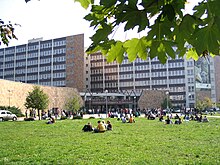
The Slovak term "vysoká škola" ("school of higher education", literally "high school", compare the German name Hochschule), which for lack of other expressions is also translated into English as "college", can refer to all schools of higher (i.e. tertiary) education, or in a narrower sense only to those schools of higher education that are not universities.
The first university on the territory of Slovakia was the Universitas Istropolitana (=Academia Istropolitana) founded in 1465. The main and largest current university in Slovakia is the Comenius University. For other current universities and colleges see List of colleges and universities in Slovakia.
The 2002 Act on Schools of Higher Education dinstinguishes public, state, and private schools of higher education (colleges):
Studies at the state and public universities is available free of charge for residents of Slovakia (?)and of the EU. School fees are being planned, however. Other students have to pay from US$2,500 to US$6,500 for one academic year.
Before entering any school of higher education for which there are more applicants than places offered, the applicants have to pass entrance examinations. These examinations take very different forms at particular schools. The "maturita" results of the applicant are usually also taken into account when evaluating whether he can become student of the school. Since the number of branches of study and of schools of higher education increased considerably in the course of the late 18th century (although at the cost of quality of the studies), the general percentage of those not being accepted to these schools decreased considerably over the same time period. Also, an increasing number of Slovaks studies abroad, especially in the Czech Republic due to a low language barrier, a slightly better economic situation (and job perspectives) in that country, as well as similarities of the two educational systems. As a result, the percentage of Slovaks with higher education has increased considerably over the last decade.
The studies are organized within the following study programmes and "stages" (also translated as levels). Each school must provide at least Stage 1:
The Act on Schools of Higher Education 2002 dinstinguishes:
The academic year begins on 1 September of the current year and ends on 31 August of the next year (in reality, however it ends in May/June). The studies in one academic year may be divided into two semesters or rarely in three trimesters. The teaching process includes various forms of instruction such as lectures, seminars, exercises, laboratory work, projects, practical training, consultations, etc. The credit system following the rules of the European Credit Transfer System (ECTS) has been introduced in 1998 for the organisation of all levels and forms of higher education study. The student's standard load is expressed by the number of sixty credits per academic year and thirty credits per semester. The school of higher education determines the total number of credits required for due completion of the study in its respective stages.
Students who live further away from their university may apply for a dorm, however private housing is increasingly popular among students despite its higher cost. Dormitories and schools provide a canteen with very low prices for students. All study materials must be obtained by students. Students receive a wide range of discounts and the state pays their health insurance and for social security payments. Students of both public and private universities can enjoy the listed benefits if they are younger than 26 year old and are student of a daily program. The current setup of universities in Slovakia makes it possible for even the poorest to attend if they can afford the first fees for application, the first payment for a dormitory, and the first purchase of study materials.
Universities offer external study program as an alternative to the daily program. The external study is longer by 1 year for both Bachelor's and Master's courses and students of external study aren't eligible for state benefits. The major difference between external study and a daily study program is the number of courses and the scheduling modified to favor employed people. The final exams for both daily and external program students are the same.
Among the most desired by employers are STEM degrees with primacy held by degrees in IT, preferably from Slovak University of Technology in Bratislava and engineering degrees. Other desirable degrees for employees are from economics, mostly from University of Economics in Bratislava. [2]

Education in the Netherlands is characterized by division: education is oriented toward the needs and background of the pupil. Education is divided over schools for different age groups, some of which are divided in streams for different educational levels. Schools are furthermore divided in public, special (religious), and general-special (neutral) schools, although there are also a few private schools. The Dutch grading scale runs from 1 to 10 (outstanding).

Gymnasium is a term in various European languages for a secondary school that prepares students for higher education at a university. It is comparable to the US English term preparatory high school or the British term grammar school. Before the 20th century, the gymnasium system was a widespread feature of educational systems throughout many European countries.
Abitur, often shortened colloquially to Abi, is a qualification granted at the end of secondary education in Germany. It is conferred on students who pass their final exams at the end of ISCED 3, usually after twelve or thirteen years of schooling. In German, the term Abitur has roots in the archaic word Abiturium, which in turn was derived from the Latin abiturus.

Matura or its translated terms is a Latin name for the secondary school exit exam or "maturity diploma" in various European countries, including Albania, Austria, Bosnia and Herzegovina, Bulgaria, Croatia, Czech Republic, Hungary, Italy, Kosovo, Liechtenstein, Montenegro, North Macedonia, Poland, Serbia, Slovakia, Slovenia, Switzerland and Ukraine.

Education in Germany is primarily the responsibility of individual German states, with the federal government only playing a minor role.
Gymnázium Jura Hronca (GJH) is a gymnasium located in Bratislava, Slovakia.
Doctor of Medicine is a medical degree, the meaning of which varies between different jurisdictions. In the United States, and some other countries, the M.D. denotes a professional degree. This generally arose because many in 18th-century medical professions trained in Scotland, which used the M.D. degree nomenclature. In England, however, Bachelor of Medicine, Bachelor of Surgery (M.B.B.S.) was used and eventually in the 19th century became the standard in Scotland too. Thus, in the United Kingdom, Ireland and other countries, the M.D. is a research doctorate, honorary doctorate or applied clinical degree restricted to those who already hold a professional degree (Bachelor's/Master's/Doctoral) in medicine. In those countries, the equivalent professional degree to the North American, and some others' usage of M.D. is still typically titled Bachelor of Medicine, Bachelor of Surgery.
Tenth grade is the tenth year of formal or compulsory education. It is typically the second year of high school. In many parts of the world, students in tenth grade are usually 15 or 16 years of age.
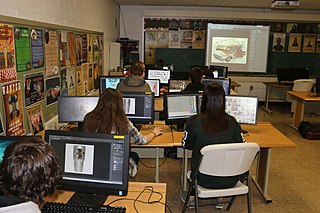
Twelfth grade is the twelfth year of formal or compulsory education. It is typically the final year of secondary school and K–12 in most parts of the world. Students in twelfth grade are usually 17–18 years old. Some countries have a thirteenth grade, while other countries do not have a 12th grade/year at all.
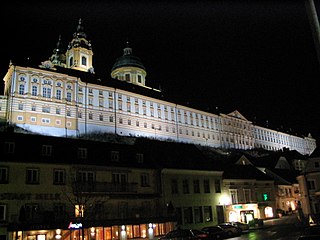
The Republic of Austria has a free and public school system, and nine years of education are mandatory. Schools offer a series of vocational-technical and university preparatory tracks involving one to four additional years of education beyond the minimum mandatory level. The legal basis for primary and secondary education in Austria is the School Act of 1962. The Federal Ministry of Education is responsible for funding and supervising primary, secondary, and, since 2000, also tertiary education. Primary and secondary education is administered on the state level by the authorities of the respective states.
Education in Romania is based on a free-tuition, egalitarian system. Access to free education is guaranteed by Article 32 in the Constitution of Romania. Education is regulated and enforced by the Ministry of National Education. Each step has its own form of organization and is subject to different laws and directives. Since the downfall of the communist regime, the Romanian educational system has gone through several reforms.
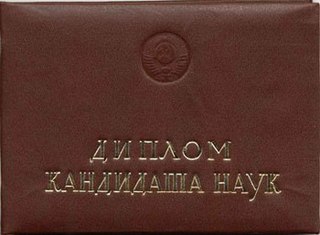
A Candidate of Sciences or Candidate of Science is the first of two doctoral level scientific degrees in Russia and some of the Commonwealth of Independent States and was the first of two doctoral level degrees in some other countries. It is formally classified as UNESCO's ISCED level 8, "doctoral or equivalent." It may be recognized as a Doctor of Philosophy, usually in natural sciences, by scientific institutions in other countries. Former Soviet countries also have a more advanced degree, Doctor of Sciences.

Real school is a type of secondary school in Germany, Switzerland and Liechtenstein. It has also existed in Croatia, the Austrian Empire, the German Empire, Denmark and Norway (realskole), Sweden (realskola), Finland (reaalikoulu), Hungary (reáliskola), Latvia (reālskola), Slovenia (realka), Serbia, and the Russian Empire, including partitioned Poland.

Gymnasium, in the German education system, is the most advanced and highest of the three types of German secondary schools, the others being Hauptschule (lowest) and Realschule (middle). Gymnasium strongly emphasizes academic learning, comparable to the British sixth form system or with prep schools in the United States. A student attending Gymnasium is called a Gymnasiast. In 2009/10 there were 3,094 gymnasia in Germany, with c. 2,475,000 students, resulting in an average student number of 800 students per school.

Education in Serbia is divided into preschool (predškolsko), primary school, secondary school and higher education levels. It is regulated by the Ministry of Education, Science and Technological Development of the Republic of Serbia.
The system of education in Iceland is divided in four levels: playschool, compulsory, upper secondary and higher, and is similar to that of other Nordic countries. Education is mandatory for children aged 6–16. Most institutions are funded by the state; there are very few private schools in the country. Iceland is a country with gymnasia.
Education in Croatia is a right defended by Article 66 of the Constitution which states that everyone is entitled to free compulsory education under equal conditions and in accordance with their aptitudes. Education is mandatory for children aged 6 to 14.
Education in the Czech Republic includes elementary school, secondary school, and post-secondary school. For students ages two to five, there are preschools that are generally not state-funded until the year before elementary school. After preschool, parents are not charged for tuition, but they must provide, stationery, and food for their children. A number of private schools exist across the country, but these schools are largely financially inaccessible for most children. There is an ongoing national discussion regarding the introduction of tuition fees for university education.
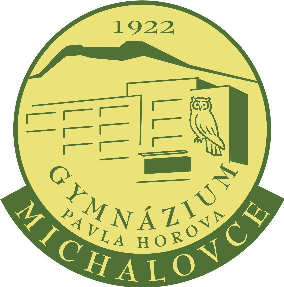
Pavol Horov Grammar School is an upper secondary school located in the city of Michalovce in Kosice Region, Slovakia. Established in 1922, it is the oldest Slovak Gymnasium east of the Mátra-Slanec Area and is one of two main providers of secondary school education in Michalovce, along with Gymnázium na ulici Ľudovíta Štúra.